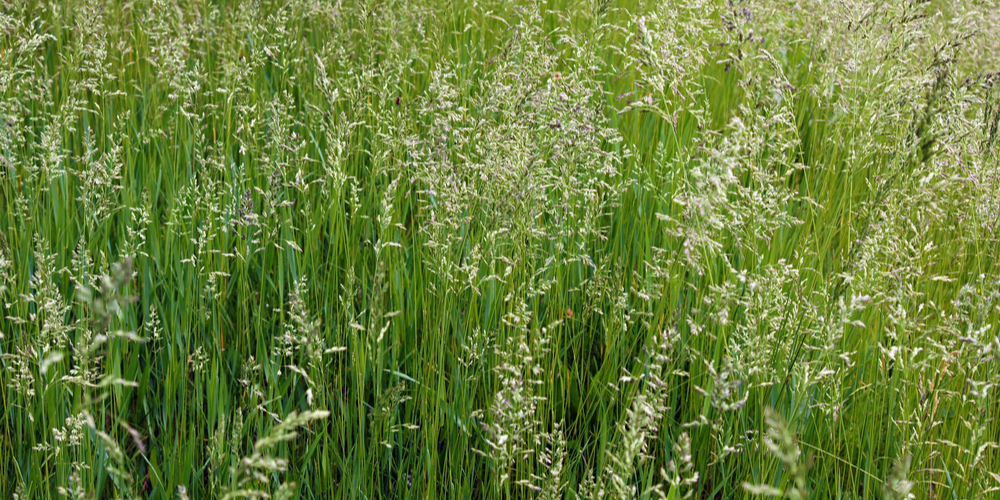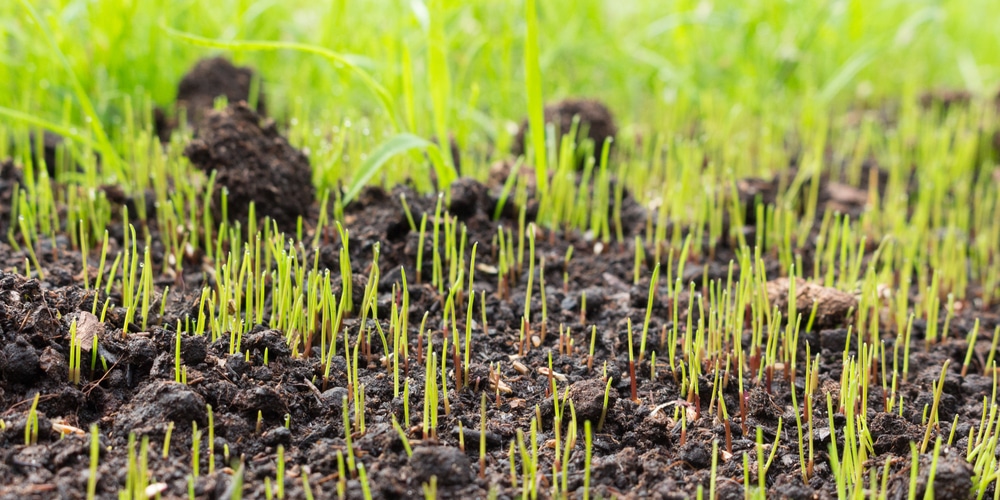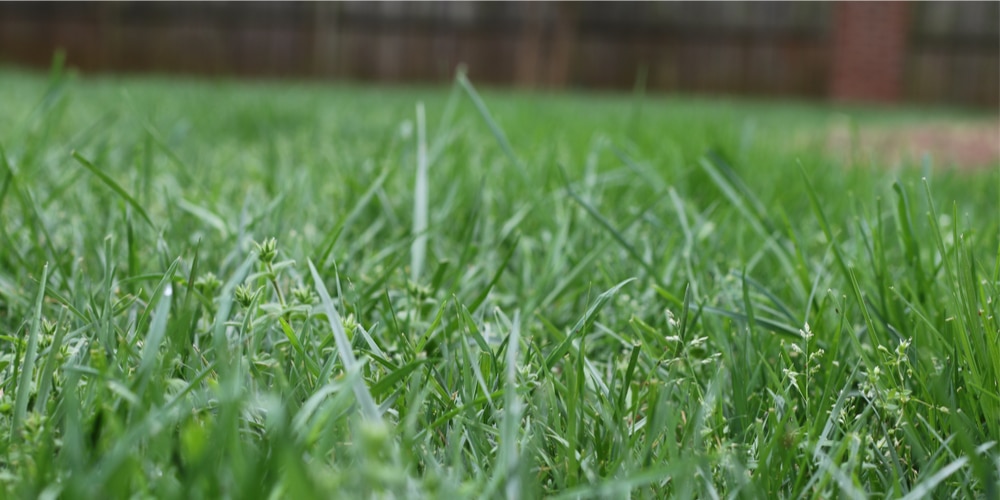Tall fescue is a cool-season lawn that comes in around 100 different varieties. You will for sure find one that suits your garden’s conditions! This type of lawn produces a deep root system and adapts well to hardiness zones between 3 and 8.One of the most common ways to start this grass is to purchase seeds. But how long does it take for tall fescue to germinate?
Keep reading to find an answer to this question (and more). This essential guide includes all you need to know to plant and care for tall fescue grass.
Planting Tall Fescue Grass Seed

Tall fescue has superior adaptability and high tolerance to cold, heat, and drought, plus it will survive even in shady areas, making it ideal for beginner gardeners. Under optimal conditions, this type of lawn is resilient and durable. You can use it as a transition lawn between the summer and wintertime to keep your turf healthy all year round.
Seed tall fescue during the fall to get the best results. Avoid establishing your lawn in spring: it might make it more susceptible to heat, weeds, and fungal disease. Plus, exposing your grass prematurely to summer heat might cause dieback among your seeds.
Avoid planting your grass when the temperature is below 50F. Doing so will cause unnecessary stress to your lawn that might halt germination. Additionally, immature seedlings can die in case of frost.
Instead, the mild fall temperatures give your lawn time to establish after dormancy and before dealing with low temperatures. But let’s go to the grain of the question. Once you plant your seeds, how long does it take for tall fescue to germinate?
Usually, fescue grass germinates when the soil temperatures reach between 50 and 65F. Such conditions tend to happen when the daytime air temperature gets to be between 60 and 75F.
The time of the year that might occur will depend on your hardiness zone. However, you can expect fescue seeds to take between 14 to 21 days to germinate. Of course, to increase your chances of success, you must pay attention to oxygen soil levels, nutrient content, and water.
Creating the optimal environment for seedlings’ growth is crucial for successful germination. Don’t forget to prepare the ground to accommodate your tall fescue. Add organic matter to increase water retention and improve the nutrient content. Seedlings need as many nutrients as possible for successful germination.
Also, make sure you aerate your soil before planting your seeds. The process helps reduce soil compaction and maximizes available oxygen, which, in turn, fosters germination. Aerification also helps hold moisture: as a result, your seedlings will come up as turf from the holes you created. Finally, drag a rake across your soil to remove bumps and dips. The ground must be even to prevent puddling and germination failure.
Also, don’t forget to press your seeds deeply into the soil. Yes, they must be in proper contact with the ground, but, at the same time, stay close enough to the surface for sunlight to hit them and initiate photosynthesis. If you don’t own a lawn roller, you can lay a plywood sheet on the area and walk over it. Doing so will move the seeds lightly into the soil, but not too much.
Tall Fescue After Planting Care
Once you plant your seeds, you will have to take good care of them to allow them to thrive. For starters, water them frequently. Moisture stimulates fescue seeds to produce seedlings. For best results, consider spreading the area with a light spray.
Doing so will maintain the soil moist but not soggy. Do it once a day during the first two weeks after planting to germinate your fescue. Once you notice some germination appearing, slowly reduce water frequency. As the seedlings grow their roots, water them once per week. For best results, water early in the morning to minimize water loss due to evaporation.
Herbicides and pesticides might damage seeds and seedlings: avoid applying them until you have mown your lawn at least three times. If you put products before seedings, wait for as long as the label claims. Don’t hurry the process: you might cause your seeds to die.
Once the seedlings start growing into the turf, maintain your grass at a suitable height. For tall fescue, you must mow up to 3.5 inches to minimize diseases incidence and the appearance of weeds.
How Long Does It Take for Tall Fescue to Germinate: Conclusion
With these considerations in might, you’ll be able to see germination and enjoy your turf in as little as a few weeks after seeding.
Related Article: When’s the Best Time of Years to Plant Fescue?

